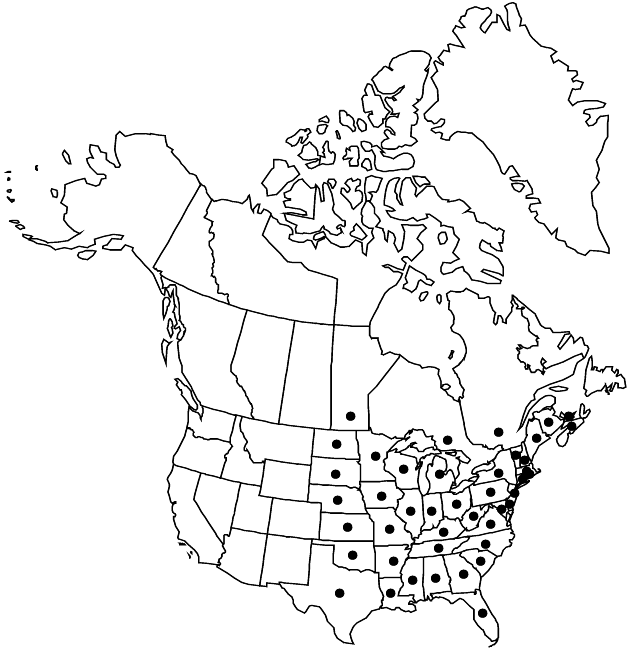Eupatorium perfoliatum
Sp. Pl. 2: 838. 1753.
Perennials, 40–100+ cm. Stems (from short caudices) single, sparsely branched distally, puberulent throughout. Leaves usually opposite (sometimes whorled); sessile; blades pinnately nerved, oblong (tapering toward apices), 50–150+ × 15–40 mm, bases connate-perfoliate, margins serrate, apices acute, faces pilose, gland-dotted (abaxial), glabrate, not gland-dotted (adaxial). Heads in corymbiform arrays. Phyllaries 7–10 in 1–2 series, oblong, 2–4.5 × 0.6–1 mm, apices (whitish) acute to acuminate, abaxial faces villous or puberulent, gland-dotted. Florets 7–11; corollas 2.5–3 mm. Cypselae 1.5–2 mm; pappi of 20–30 bristles 3–3.5 mm. 2n = 20.
Phenology: Flowering Aug–Oct.
Habitat: Moist, low ground, marshes, roadsides, swamps, wet pastures
Elevation: 10–500+ m
Distribution

Man., N.B., N.S., Ont., P.E.I., Que., Ala., Ark., Conn., Del., Fla., Ga., Ill., Ind., Iowa, Kans., Ky., La., Maine, Md., Mass., Mich., Minn., Miss., Mo., Nebr., N.H., N.J., N.Y., N.C., N.Dak., Ohio, Okla., Pa., R.I., S.C., S.Dak., Tenn., Tex., Vt., Va., W.Va., Wis.
Discussion
Eupatorium perfoliatum is both distinctive, with its perfoliate leaf bases, and extraordinarily widespread. Hybrids between E. perfoliatum and other species of Eupatorium have been reported. The name E. resinosum var. kentuckiense Fernald is based on hybrids between E. perfoliatum and E. serotinum (= E. ×truncatum Muhlenberg ex Willdenow). Eupatorium perfoliatum var. colpophilum refers to populations characterized by narrower, more leathery leaves found in the extreme northeastern portion of the range.
Selected References
None.